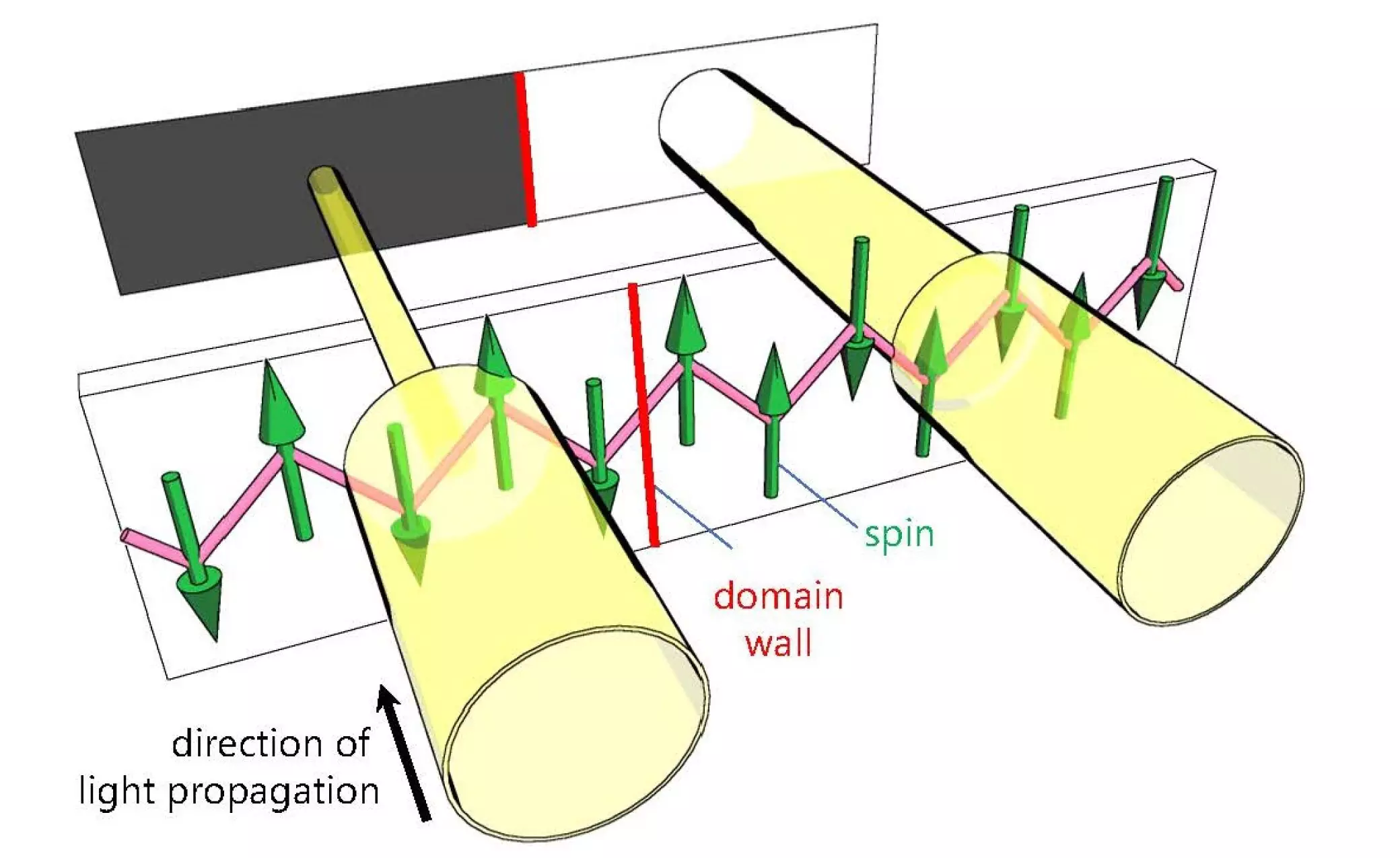The allure of magnets has long sparked interest in both everyday life and scientific research. However, a recent breakthrough from Osaka Metropolitan University and the University of Tokyo brings a novel perspective by navigating into the intricate domains of quantum materials. Their pioneering work sheds light on the elusive magnetic domains present in antiferromagnetic materials, where conventional magnetic principles are turned upside down. By employing advanced optical techniques to visualize these regions, the researchers have not only advanced our understanding of quantum materials but also paved the way for future innovations in electronic technology.
Antiferromagnets, unlike their ferromagnetic counterparts, possess a unique property where atomic spins align in opposite directions, effectively canceling one another out. This results in materials that do not exhibit net magnetism, thus eschewing the traditional north and south poles associated with magnets commonly understood by the public. Despite their lack of visible magnetic features, antiferromagnets hold immense potential in technology, especially for next-generation electronics and memory devices, owing to their quasi-one-dimensional characteristics.
The study centers on a particular antiferromagnetic material known as BaCu2Si2O7, which presents unique observational challenges due to its low magnetic transition temperatures and minimal magnetic moments. These attributes have historically hindered physicists from accurately capturing the behavior of magnetic domains — distinct regions within these materials where atoms align in ordered magnetization. The boundaries separating these domains are crucial, known as domain walls, yet studying their dynamics has remained an uphill battle.
Lead researcher Kenta Kimura emphasizes the complexity inherent to quasi-one-dimensional quantum antiferromagnets and the traditional methods that failed to deliver. Recognizing these obstacles mobilized the research team to innovate methodologies capable of direct observation. This quest led them to utilize nonreciprocal directional dichroism, a clever mechanism through which the light absorption characteristics of a substance alter based on the light’s direction or magnetic alignment. This unconventional approach not only illuminated areas previously unseen within BaCu2Si2O7 but also revealed a fascinating coexistence of opposing magnetic domains within a single crystalline structure.
In addition to visualization, the researchers explored the dynamic aspect of domain walls under the influence of an electric field, owing to a concept known as magnetoelectric coupling. This coupling illustrates the interconnectedness of magnetic and electric properties, allowing for manipulation without altering the original orders within the material. The ability to move domain walls signifies a major leap in controlling how quantum materials function, showcasing a drive towards real-time applications that were once considered theoretical.
As Kimura remarked, “This optical microscopy method is straightforward and fast, potentially allowing real-time visualization of moving domain walls in the future.” The implications of this ease of access to understanding quantum materials are rich and multifaceted. No longer confined to theoretical frameworks, scientists can now observe the active role of magnetic domains in real time, opening doors to further experimentation.
The significance of this study extends beyond mere observation; it represents a monumental stride into unraveling the complexities of quantum behavior in material science. As researchers continue to refine these methodologies, new insights are anticipated regarding how quantum fluctuations drive the formation and movement of magnetic domains.
Kimura anticipates that applying these sophisticated techniques to other quasi-one-dimensional quantum antiferromagnets can lead to substantial revelations regarding their interactions with external stimuli. Such advancements may ultimately facilitate the design and development of smarter electronic systems that leverage the unique properties of these materials.
The research from Osaka Metropolitan University and the University of Tokyo illuminates a promising frontier in physics. It validates the significance of observation in advancing scientific understanding, creating pathways toward electro-magnetically manipulated quantum devices that could transform the landscape of technology for years to come. This work not only stretches the boundaries of material science but also enriches our recognition of the complexities inherent in the quantum realm, where understanding often begins with the simplest acts of observation.


Leave a Reply